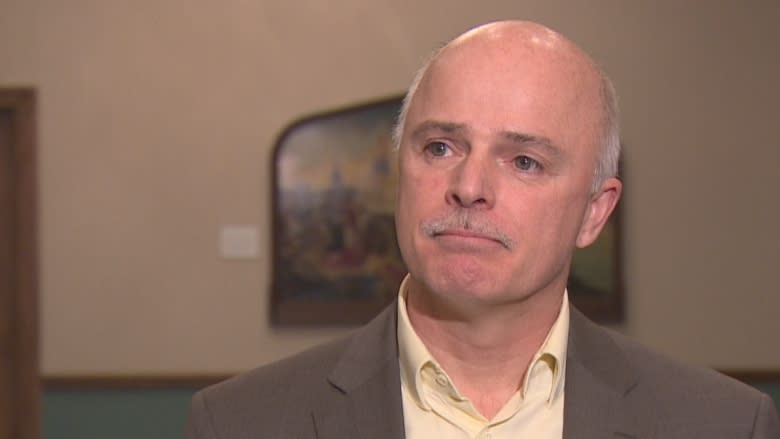No-layoff clause good for N.L. economy, finance minister argues
Finance Minister Tom Osborne says a no-layoff clause in a tentative collective agreement with Newfoundland and Labrador's largest public sector union is actually good for the province's fragile economy.
If government were to follow the advice of groups like the St. John's Board of Trade, Osborne said, thousands of government workers would zip up their wallets and the economy would practically grind to a halt.
"We cannot afford to have fear in our public service that there will be mass layoffs. We cannot afford to have people wondering 'Who's next?' and not spend," Osborne told reporters on Friday.
The provincial government has taken the unusual step of guaranteeing there will not be large-scale layoffs during the duration of the collective agreement, which is designed to give a sense of job security to some 20,000 members of the Newfoundland and Labrador Association of Public and Private Employees.
If approved, it will protect jobs until at least March 31, 2020.
"We don't need to put fear in real families where they don't buy cars, they don't buy sofas, they don't shop, they don't go out to dinner. That's what we don't need, and that's what the board of trade is asking," said Osborne.
Osborne guarantees deal will be ratified
NAPE members are now holding ratification votes throughout the province, with a result expected by early February.
The clause has sparked criticism from the board of trade, which said government has given up its ability to manage its financial affairs at a time when the province faces troubling annual deficits and an unprecedented level of debt.
Osborne accused board of trade chair Dorothy Keating of fear mongering and creating unnecessary division, but also suggested another outcome.
"She's taken a contract that was good for both sides, that NAPE were concerned on whether or not they'd be able to get this contract agreed to, and she's guaranteed that we'll have ratification," Osborne said.
Osborne said the core government workforce — estimated at 8,000 employees in mid-2017 — has been reduced by six per cent over the past two years, largely through attrition.
The plan is to follow that same pattern over the next 24 months, he said.
Osborne has also directed all agencies, boards and commissions — with roughly 37,000 employees — to come up with attrition plans to reduce what is the largest public sector workforce, by capita, of any province in Canada.
"Why would we get rid of our youngest employees through layoffs when we know we have an aging workforce and the ability to find attrition measures is there?" said Osborne.
"Why would we hurt the economy by having people not spend their money because they're afraid they're going to lose their job?"
Osborne predicts big savings for province
He called the tentative agreement an "excellent deal" for the province and public sector workers, at a time when unemployment numbers are on the rise.
In agreeing to the no-layoff clause, Osborne said government negotiated terms that will mean big savings, including a full-on wage freeze for the entirety of the agreement, which is a first for the province.
The elimination of severance will cost government some $240 million in lump-sum payments, but will eventually mean savings of $25 million annually.
And changes to health benefits for new employees will also save "considerable money" in the future, Osborne explained.




